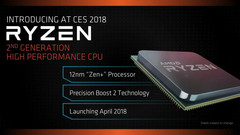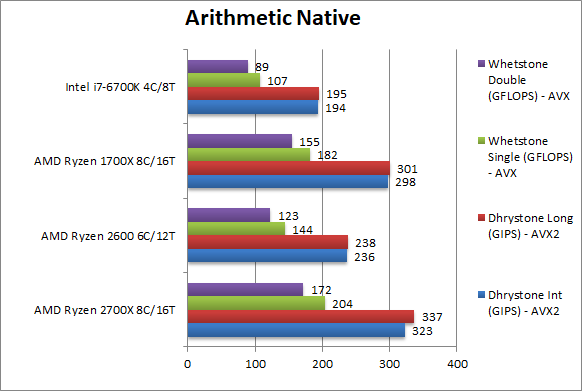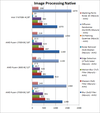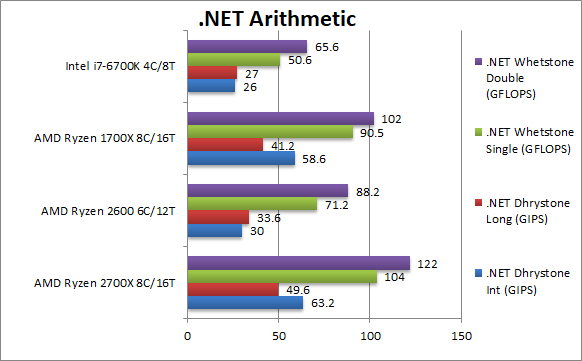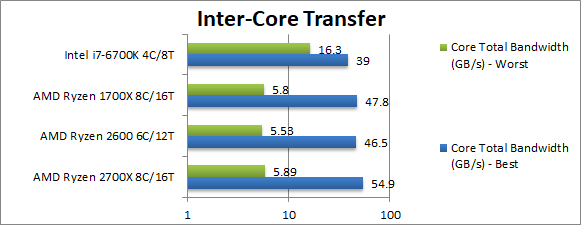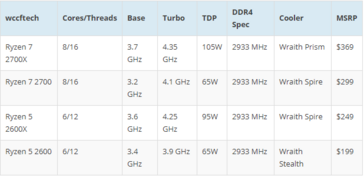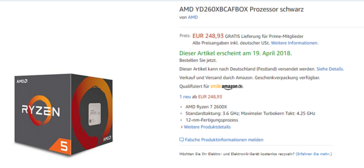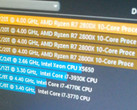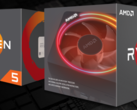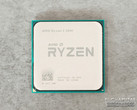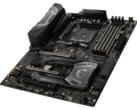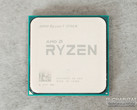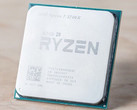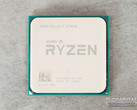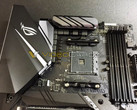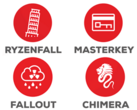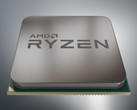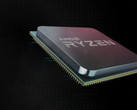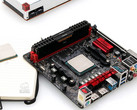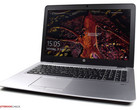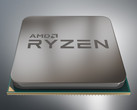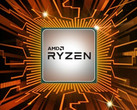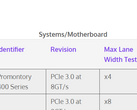Introduction
AMD's 2nd generation Ryzen (aka Ryzen 2) is becoming the CPU to watch out for in H1 2018. We have been hearing a lot about the new Zen+ - based chips and their impressive performance in some of the leaked benchmarks. SiSoftware, makers of the popular SiSoftware Sandra suite of benchmarks did an extensive evaluation of two Ryzen 2 chips — the Ryzen 7 2700X and the Ryzen 5 2600 and posted a lot of comparisons with the AMD 'Summit Ridge' Ryzen 7 1700X and the Intel 'Skylake' Core i7-6700K. The review pages have since been taken down but we summarize the major points here. Note that there are no gaming benchmarks in this evaluation. Also, we now have information on the pricing and availability of these new CPUs so without further ado, lets chip away (pun intended) at the information at hand.
CPU Performance - Native
SiSoftware has tested native CPU performance by using AVX2 and AVX instruction sets for evaluating native arithmetic, SIMD, and cryptopgrahy performance. While Ryzen 2 supports all modern instruction sets, SiSoftware says that support for AMD specific ones such as FMA4 and XOP has been dropped due to low adoption. Performance percentages are of the Ryzen 7 2700X in comparison with the Ryzen 7 1700X (aka Ryzen 1) unless specified.
The following are the key performance metrics obtained by SiSoftware in native CPU benchmarks —
- Arithmetic Native — Integer-based Dhrystone benchmarks showed an 8-12% increase over the Ryzen 7 1700X while floating point-based Whetstone scores showed a 11-12% increase in line with the speed increase over the previous generation.
- Vector SIMD Native — A 10% average improvement (7-15%) can be observed using the AVX2/FMA instruction set. SiSoftware notes that the number of SIMD units are unchanged.
- Crytography Native — These are memory bandwidth bound tests. There is just a 1% improvement seen in the Crypto AES algorithm but scores can improve when faster memory (2933 Mt/s) is used. The Crypto SHA algorithm has a larger headroom with just one buffer. This enables Ryzen 2 to use its increased clock speeds to give an overall 12% performance boost.
- Financial Analysis Native — The Ryzen 7 2700X posts an impressive 23-28% higher scores than its predecessor. Intel had a tough time keeping pace with the Ryzens in this test.
- Scientific Analysis Native — The 2700X posts a 10-12% higher performance but can benefit from increased memory bandwidth for significant leads.
- Image Processing Native — The 2700X has a 11% lead over the 1700X in all tests, which can be attributed to the improved cache and memory subsystem, but strangely lags behind the 6700K in a couple of them.
CPU Performance - Software VM
These suite of benchmarks test the performance of software virtual machines (SVM) such as .NET and Java. Scores in these benchmarks give an idea of how well the CPU can perform in applications written using those runtimes. SiSoftware notes that for this assessment, .NET 4.7.x and Java 1.9.x were used.
The following metrics were obtained —
- .NET Arithmetic — The 2700X posted up to 20% higher performance compared to Ryzen 1700X in both integer (Dhrystone) and floating point operations (Whetstone).
- .NET Vectorised — Ryzen 2 is 9-12% faster than Ryzen 1 and has at least 2x the performance of the 6700K suggesting strong multi-core SIMD performance.
- Java Arithmetic — Ryzen 2 is able to post strong Java integer (Dhrystone) and Java floating point (Whetstone) scores ranging 7-13% higher than Ryzen 1.
- Java Vectorised — The Java Virtual Machine (JVM) cannot yet support native SIMD translation like .NET but Ryzen 2 still manages to have a 15% lead over Ryzen 1.
SiSoftware says that the clear performance gains posted by the Ryzen 7 2700X make it the CPU of choice when it comes to .NET or Java code.
Cache and Memory Benchmarks
SiSoftware Sandra's CPU Multi-Core Efficiency Benchmark was modified to test latencies between each producer/consumer CCX unit (aka compute unit) combination and also test the inter-CCX bandwidth to give best match (lowest latency) and worst match (highest latency) figures. Scheduling producer/consumer threads on the same CCX ensures lower latencies and higher bandwidth.
Let us have a look at these scores below —
- Inter-Core Transfer — The 2700X scored a total inter-core best bandwidth of 54.9 GB/s, which is 15% higher bandwidth than its predecessor. The total inter-core worst bandwidth was just 5.89%, which is just a 2% increase over Ryzen 7 1700X. For better scores in this test, faster memory is essential.
- Inter-Core Latency — A 6-7% reduction in L3/CCX latencies is seen even at the same clocks as the 1700X.
- Cache and Memory Transfer — A high 20-30% increase in bandwidth increase across L1D/L2/L3 caches is seen with the 2700X. Memory bandwidth showed a modest 2% increase at the same memory clock as the 1700X indicating memory controller improvements. Faster DDR4 memory should help in posting higher scores.
- Cache and Memory Data Latency — The 2700X has 6-8% reduced memory latency compared to the 1700X but Intel leads this benchmark by posting even lower latencies, sometimes up to 3 times less.
- Cache and Memory Code Latency — The 2700X continues to maintain the 8% improvement in latencies but again, Intel still has the lead.
- Memory Transactions — The 2700X has a 10-11% lead over the 1700X but it cannot match the 6700K due to lack of support for Hardware Lock Elision (HLE) — a set of instructions that speeds up multi-threaded software execution. Intel, however, disables HLE on all but its high-end CPUs so things should still work out in AMD's favor overall.
Pricing and Availabiity
Alongside the benchmarks, pricing and availability info for the 2nd generation Ryzen chips also seem to have leaked. An Amazon.de listing (now taken down) for the Ryzen 5 2600X show the CPU to be priced at Euro 248.93 corresponding to US$249 with the Wraith Spire cooler. All Ryzen 2 chips are slated for availability on April 19 along with the new X470 and B450 motherboards. Older 300-series motherboards are still compatible with the new Ryzens following a firmware/BIOS update.
Conclusion
The overall improvements seen in the above Ryzen 2 benchmarks can be boiled down to three major advancements in this generation —
- Transition to a 12nm process from the earlier 14nm process resulting in higher frequencies and lower power consumption.
- Cache and memory speed and latency improvements.
- New turbo boost algorithms such as XFR 2.0 and Precision Boost 2.0
The improvements across CPU and memory tests have been consistent but it is evident that to get the best out of the 2nd generation Ryzens, they need to be coupled with faster DDR4 memory. The increased clocks also come at an expense of a 11% TDP increase but that should not affect 'normal' power use scenarios.
There are a couple of caveats in this comparison. One is that the 2700X is compared to the 1700X, which begets the question — why not compare it with the Ryzen 7 1800X, the flagship CPU from the previous generation? While we can't speak for SiSoftware, a plausible explanation would be that the 1700X is a direct cost competitor to the 2700X and makes for a more practical comparison as to how much of extra CPU can be gotten for the same price. So far, there has been no information pointing to a possible 2800X so that makes the 2700X the flagship CPU of this generation.
The other is the inclusion of the Intel Core i7-6700K in the comparison instead of the Core i7-7700K or the more recent Core i7-8700K. Again, while we do not know SiSoftware's rationale, it could be that the reviewer had the 6700K handy and that its inclusion was more academic than to deduce anything concrete.
Overall, it seems that AMD has once again delivered with the 2nd generation Ryzens. While Intel still has the advantage in gaming, Ryzen is not too far behind and coupled with the right memory, can help propel those frame rates upwards. We will put the new CPUs through our own battery of tests and will publish a review as soon as we get our hands on them next month. Hopefully, the 2nd generation Threadrippers can also sustain the momentum on their part.
As SiSoftware notes in their conclusion, AMD is here to stay.
Source(s)
Original Benchmarks Source: SiSoftware (Review pages taken down)
Archived pages can be found here (Thanks to /u/CatMerc on Reddit)




